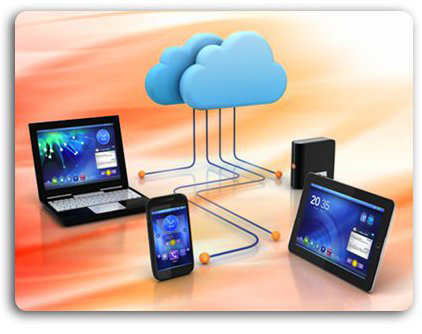
Computing in the cloud enables ECPs to connect to their patient information
from anywhere from any device with an internet connection.
NEW HOLSTEIN, Wis.—When Cheryl Roers, OD, bought her first practice, it was easy enough to use an in-house server to support her electronic health record software, but as she gradually added locations over the years, it became clear that she needed a more efficient solution. She found her answer in cloud-based computing. "I didn't want to be tied to the server anymore," Roers told dba, "so I decided that cloud-based would be the answer."
While a local server provided all the information storage and computing power she needed when Roers bought and operated a single-location practice in 2004, access and connection challenges started as soon as she added a second office a year later. "I needed a server to connect the two offices," she said.
The challenges intensified as she slowly added practices over the years. She now runs five offices under the name
Your Eye Care Team in the East-Central Wisconsin region, three within 12 miles of each other and the other two about 40 miles apart. Before going to the cloud, accommodating these five offices required maintaining two separate servers and accessing the massive amounts of information they needed to store via different internet services in different cities. "If a server went down or the internet went down, then three of my offices could go down," she said.
Now, with the information for all five offices stored remotely in the cloud along with the software that is managing it, each location connects to it individually. "If one internet goes down, it doesn't affect the other offices," said Roers, who can also use cell phones as backup for the rare times that an internet connection does fail.
Because the information and software are centrally located, cell phones as well as laptops or tablets also enable Roers to access the information from anywhere she has an internet connection. "It was a lot more difficult to work remotely when we were server-based," said Roers, "but now I can log in everywhere."
Maintaining a reliable connection from anywhere is just one of the benefits of going to the cloud. Seamless software updates and automatic backups are two more. Prior to the switch, the software had to be updated on each individual server at night. Now, the centralized software is updated seamlessly and automatically. Backing up is automatic as well. "Before, we had to back up our servers every night," Roers told dba. "Now, we don't have to back up because they take care of that."
"They" refers to the software company Roers selected to take them to the cloud. While there are a number of companies offering cloud-based electronic health records software for eyecare professionals, the system Your Eye Care Team selected was
RevolutionEHR, which has been offering cloud-based solutions since 2006.
Using cloud-based computing has also enabled Roers to take advantage of economies of scale. Instead of each office having its own billing, Your Eye Care Team maintains centralized billing, which, like the system overall, "ultimately saves time, money and labor, making the entire operation much more efficient," concluded Roers.